Middle East
Sidi Shayban’s Ramadan iftars challenge Israeli restrictions in West Bank | Israel-Palestine conflict
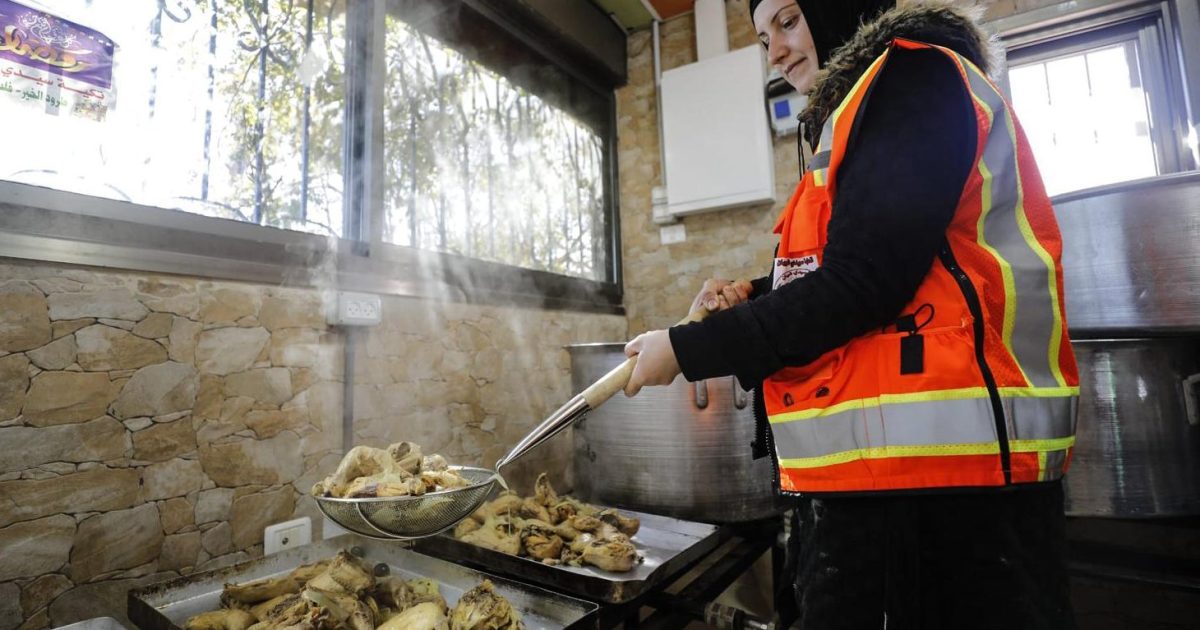
El-Bireh, occupied West Bank – In a modest Ramallah hotel, nearly 100 displaced Palestinians from Gaza, most receiving medical treatment, wait silently for iftar. They sit on plastic chairs around long tables, bathed in the golden light of sunset.
They carry stories of loss. Some lean on crutches, missing limbs. Parents watch over sick children, exhaustion etched into their faces.
Ahmed Abu al-Am and his volunteers move quickly, distributing meals.
A handful of volunteers offloaded trays and boxes of food from two vehicles which had just arrived from the kitchen, some 15 minutes away.
Abu al-Am has run the Sidi Shayban communal kitchen since 2002, serving iftar every Ramadan.
As he passes meals around the hotel, he worries there is not enough food. “We do what we can,” he says. “But every donor has their own priorities. We can only distribute what we’re given.”
Among the displaced is Haya Nahal, 36, who arrived in Ramallah with her daughter, Raghd, two months before the war. Raghd, 11, has a neurological disorder, and Haya had to leave her husband and son behind to visit Ramallah for Raghd’s treatment.
“I haven’t been able to return since,” she says, her voice heavy with longing. “No matter how difficult life is at home, nothing replaces belonging. We have shelter here, and kind-hearted people help, but it’s not home.”
Beside her sits Laila, an elderly woman from Gaza. She arrived in occupied East Jerusalem’s Augusta Victoria Hospital with her granddaughter, Amira, who had cancer. “We arrived six months before the war,” Laila recounts. “None of Amira’s immediate family was allowed to accompany her, so I came instead.”
On November 13, Amira died at age nine. Laila remains stranded, unable to return home.
She clutches a white handkerchief. “I’ve been here nearly two years. I miss Gaza.”
As iftar begins, the room quietens down and people take their first bites, whispering prayers of gratitude. Abu al-Am and his team look on, ensuring everyone is served. They are always the last to break their fast.
Back in the kitchen
Across the living room and the balcony of his apartment in el-Bireh, Abu al-Am, 43, moves swiftly between bubbling pots.
The space no longer resembles a home – sofas and carpets have long been replaced by heavy-duty stoves, their wood-fuelled flames licking the bases of massive cauldrons.
As Abu al-Am lifts each lid, clouds of spiced steam rise, filling the air with the scent of slow-cooked meat, onions, and fragrant rice. The aroma drifts into the street, drawing in curious passers-by.

In the makeshift kitchen, volunteers stir, chop, and season with practised efficiency. The food is coming along, and there is still time before Maghrib, when the sunset call to prayer will signal the end of the daily fast.
Soon, the first visitors will trickle in – some to sit and eat, others to collect meals to take home.
Today’s menu is qudra, a Palestinian dish of fragrant rice cooked with chickpeas, garlic, and slow-cooked lamb. The meal simmers over a massive wood-fired oven, while a separate gas oven roasts trays of chicken for variety.
Nearby, long tables are lined with containers, ready to be filled and distributed.
For Abu al-Am, this routine is second nature.
“The idea for the kitchen came during the second Intifada,” Abu al-Am explains, squeezing a chickpea to test if it’s cooked. “The Israeli siege on the West Bank left many families struggling, and we had to do something to help.”
The initiative has grown since the second Intifada ended in the mid-2000s and adapted to the community’s needs.
It was not until 2015, when it gained traction on social media, that the kitchen took its current name – a tribute to the historic neighbourhood where a revered wali, or saint, who is believed to have journeyed from the Maghreb, fought alongside Saladin against the Crusades and was ultimately laid to rest here.
Since then, pandemics, occupation, and economic hardships have come and gone. Some years, volunteers hosted iftars as far as East Jerusalem and Gaza; in others, they focused on distributing takeaway meals.
Public iftars, known as “tables of mercy“, are a centuries-old tradition observed in Ramadan across the Muslim world. They bring communities together, fostering generosity and solidarity in the spirit of the holy month.
This year, in the West Bank, it comes amid Israeli violence and escalations unseen since 2002, which have displaced more than 40,000 people, and have raised concerns of annexation. While el-Bireh has been spared the displacements, it has been raided multiple times in the months leading up to Ramadan.
Meeting rising needs
A civil servant and father of two, Abu al-Am says the kitchen’s mission is to reach as many families as possible, no matter the challenges. “We’ve extended support to many governorates, even Gaza. No one is excluded,” he tells Al Jazeera.
“This is entirely funded by donations,” says Abu al-Am, who was able to use the home he inherited into a charity hub and move elsewhere. “What we offer, and how often we offer it, depends on what people give.”
Since the pandemic, demand has surged. Then came Israel’s war on Gaza and tightened restrictions in the West Bank, pushing even more families into hardship.

“Many who once had stable incomes lost everything after the October war,” he says, referring to the war in Gaza. “Israel’s restrictions kept Palestinian workers from reaching jobs. Who was going to support those families?”
Since October 2023, when the war began, Israel has set up more than 900 roadblocks across the West Bank, fragmenting the territory and choking livelihoods. The kitchen has struggled to operate, but Abu al-Am and his team adapted, coordinating with volunteers in different governorates to ensure supplies reached those in need.
Among the volunteers is Shireen, who first came to the kitchen in need herself.
“I’ve been a single mother for five years. I didn’t even know this place existed until they helped me financially during a rough time,” she says, busily wrapping meal containers, dressed in her volunteer uniform.

The kitchen organisers helped pay for a room Shireen and her children could move into, and continue to help her financially through donations they collect.
Without a formal degree, Shireen struggled to find work. “I couldn’t afford rent or school fees for my kids,” she recalls. “But thanks to this kitchen, we got through. Now, the least I can do is give back. I help prepare food and clean, and my children join Abu al-Am in distributing meals, especially during Ramadan.”
The youngest volunteer is 14-year-old Mustafa. Carrying cartons of yoghurt and bottled drinks, he moves swiftly between stations. “I’m here because I’m an orphan, and I want to make others happy,” he says. “Volunteering changed me. My mother always told me, ‘You’re too soft for this kind of work.’ But I wanted to prove to her – and to myself – that I can do it.”
This piece is published in collaboration with Egab.
Middle East
The Hawaii of Israel: How Trump legitimised a longstanding Israeli vision | Israel-Palestine conflict
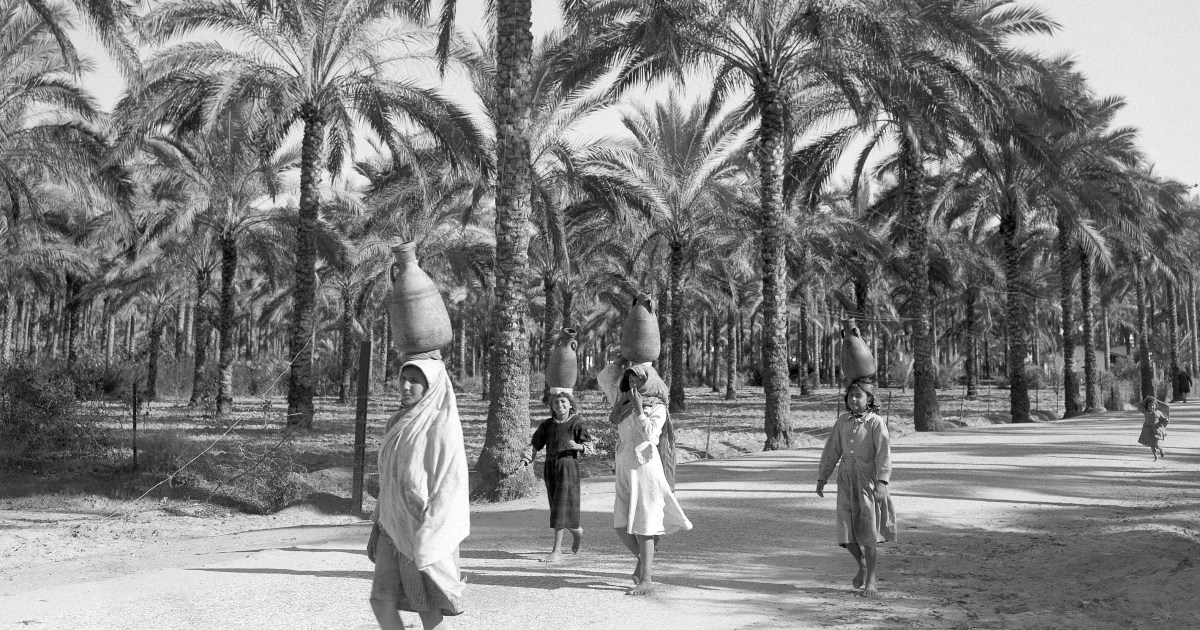
On April 7, United States President Donald Trump met Israeli Prime Minister Benjamin Netanyahu for a second time since his inauguration. Speaking to the media, Trump doubled down on his earlier comments about the Gaza Strip, describing it as an “incredible piece of important real estate”.
Trump also repeated his suggestion that the Palestinians should leave the Strip “to different countries” and claimed that people “really do love that vision. … A lot of people like my concept.”
Days later, about 70 percent of Gaza had been turned into a “no-go zone” for Palestinians. Confirming that Israel is working “in accordance with the US president’s vision, which we seek to realise”, Israeli Defence Minister Israel Katz declared Israel’s intention to “seize” more territory, adding that “wilful passage” will be given to Palestinians who want to leave.
It is by now clear that Trump’s statements on Gaza have had the effect of legitimising a longstanding Israeli vision of ethnic cleansing of the Strip. What the US president calls “my concept” is in fact not his at all.
Over decades of Israeli occupation and colonisation of the Gaza Strip, there have been multiple plans to empty out or disperse the Palestinian population in a bid to secure full control over this part of Palestine. The power of colonial practices has also been tested. For example, to draw Israeli settlers and thereby help transform Gaza’s demographics, the Strip was at one point even promoted as the “Hawaii of Israel”.
Left out of Israeli war aims in the 1948 Arab-Israeli War, the Gaza Strip emerged out of the 1949 Armistice Agreements under Egyptian military rule. Constituting only a small part of what until then had been the Gaza District of Palestine, the Gaza Strip was home to two groups of Palestinians: the local population and refugees – people who had been forced off their land as Israel expanded its territorial reach during the war.
As the guns fell silent, the Gaza Strip became known in Israeli policy circles as the “job unfinished” – a slice of land next to the Egyptian border that Israel’s leaders would like to control, preferably without its Palestinian population.
Israel’s first attempt to take Gaza by force occurred in 1956. But under pressure from US President Dwight Eisenhower, Israeli Prime Minister David Ben-Gurion had no choice but to withdraw and put an end to the Israeli occupation. The botched attempt taught Israel an important lesson: To redraw the map of the Middle East and to make its territorial expansionist agenda a success, Israel needed American support and approval.
The 1967 Arab-Israeli War was far more successful in this regard. Through conquest and occupation, the Gaza Strip was brought under direct Israeli rule. This opened the door to revitalise “transfer” – the forced displacement and ethnic cleansing of Palestinians. Seen as both necessary and permissible or, in Ben-Gurion’s words, “an important humane and Zionist idea”, transfer was recognised as an effective tool to advance Zionist colonisation of Palestine.
In the following years, as noted by Palestinian historian Nur Masalha, transfer acquired different labels. These included “population exchange”, “Arab return to Arabia”, “voluntary emigration” and “rehabilitation” with different Israeli governments taking different approaches.
One approach was Defence Minister Moshe Dayan’s “open bridges”, which allowed Palestinians in Gaza to leave for other countries in search of work. Another was to open offices in Gaza’s refugee camps to organise and pay for travel and passports for Palestinians willing to “voluntarily migrate”, which in effect turned the Israeli Ministry of Foreign Affairs into a “global travel agency”. Regardless of the approach, Israel’s policy objective remained the same: to create a drive in Palestinians to leave the Strip.
“I want them all to go, even if they go to the moon,” Israeli Prime Minister Levi Eshkol said. Expressing Israeli frustration, Eshkol articulated the feeling of being stuck with what was considered the problem of Gaza. After all, only the Palestinian population there – and the sizeable refugee population in particular – stood in the way of full Israeli annexation.
In response to Israel’s Gaza “dilemma”, its politicians also looked for more comprehensive solutions. This led to an almost continuous flow of plans for the “rehabilitation” of Palestinians outside the Strip. Starting immediately after the 1967 war, a variety of potential destinations came up. These included the West Bank, the Sinai Peninsula, Iraq, or even as far afield as Canada and Australia.
Despite Israeli efforts and elaboration of plans – and much to the disappointment of Israel’s decision-makers – the initiatives came to naught as the number of Palestinians leaving the Strip remained limited. And given other considerations, including moral, legal and diplomatic ones, the plans to displace a large number of Palestinians from Gaza were left in the drawer.
But as Israeli politicians turned to examine their menu of choices in the post-October 7, 2023, era, “voluntary emigration”, or forced displacement, re-emerged. Gone was any sensitivity to international opinion and potential reactions. Instead, Trump has led the way, making statements on Gaza that in effect turn decades of Zionist ideology and practice into official American policy.
By means of his policy stance, the US president has legitimised a longstanding Israeli vision of ethnic cleansing in the Strip. In the process, his articulation of policy has moved ever closer to the strand of Revisionist Zionism that viewed Palestinians as aliens in their own land and, therefore, “transferable”.
In arguing that Palestinians need to go to make Israel and the region safe, Trump has departed from the internationally shared principle that Palestinians in the Gaza Strip – as elsewhere in the occupied Palestinian territory – have legitimate rights to self-determination in their land. As such, Trump brings to mind Revisionist Zionist ideologue Ze’ev Jabotinsky, who argued that “when the Arab claim is confronted with our Jewish demand to be saved, it is like the claims of appetite vs the claims of starvation” with “transfer” inextricably linked to Jewish rights to the land.
The cynical promises of a better future for people who are left with nothing but their land after a brutal war of erasure and plausible genocide must be taken seriously. The legitimacy Trump has given to Israeli plans poses a threat in the here and now, but it could also outlast his presidency.
That is because he has offered US presidential sanction of ethnic cleansing as an acceptable tool. This leaves the door open for Israel – in the near or distant future – to pursue “transfer”, “rehabilitation” and “voluntary emigration” of Palestinians, whether in Gaza or the West Bank.
Furthermore, the American president has repeatedly communicated US support for illegal land seizures and colonisation. Suggesting Gaza (and Greenland) could become “US territory”, he has reintroduced and validated ideas that most leaders of the world had put on the scrap heap of history.
Finally, Trump has shifted the US position away from the premise of working towards a two-state solution. In fact, considering his statements, there appears to be a fundamental disregard for Palestinians in Gaza and their collective right to self-determination.
Looking at current US policy against historical record, Trump’s “Riviera of the Middle East” seems a curious combination of Zionist ethnic cleansing under the “transfer” model and the colonial ideal of the “Hawaii of Israel”.
It is no wonder Trump has been cheered on by Israeli leaders as he calls for the forced depopulation of the Gaza Strip and its transformation into fully fledged colonial territory – annexed or otherwise. After all, Trump’s ideas follow in the footsteps of Zionist leaders from Ben-Gurion to Netanyahu, under whom transfer has been the preferred but diplomatically and legally challenging option all along.
With Trump going out in front, such challenges could turn into tomorrow’s opportunities. It remains the task of other states to stand up against Israeli-American normalisation of continued ethnic cleansing and colonial land grabs in Palestine.
The views expressed in this article are the author’s own and do not necessarily reflect Al Jazeera’s editorial stance.
Middle East
Thousands gather for centuries-old Holy Fire ceremony in Jerusalem | Jerusalem News
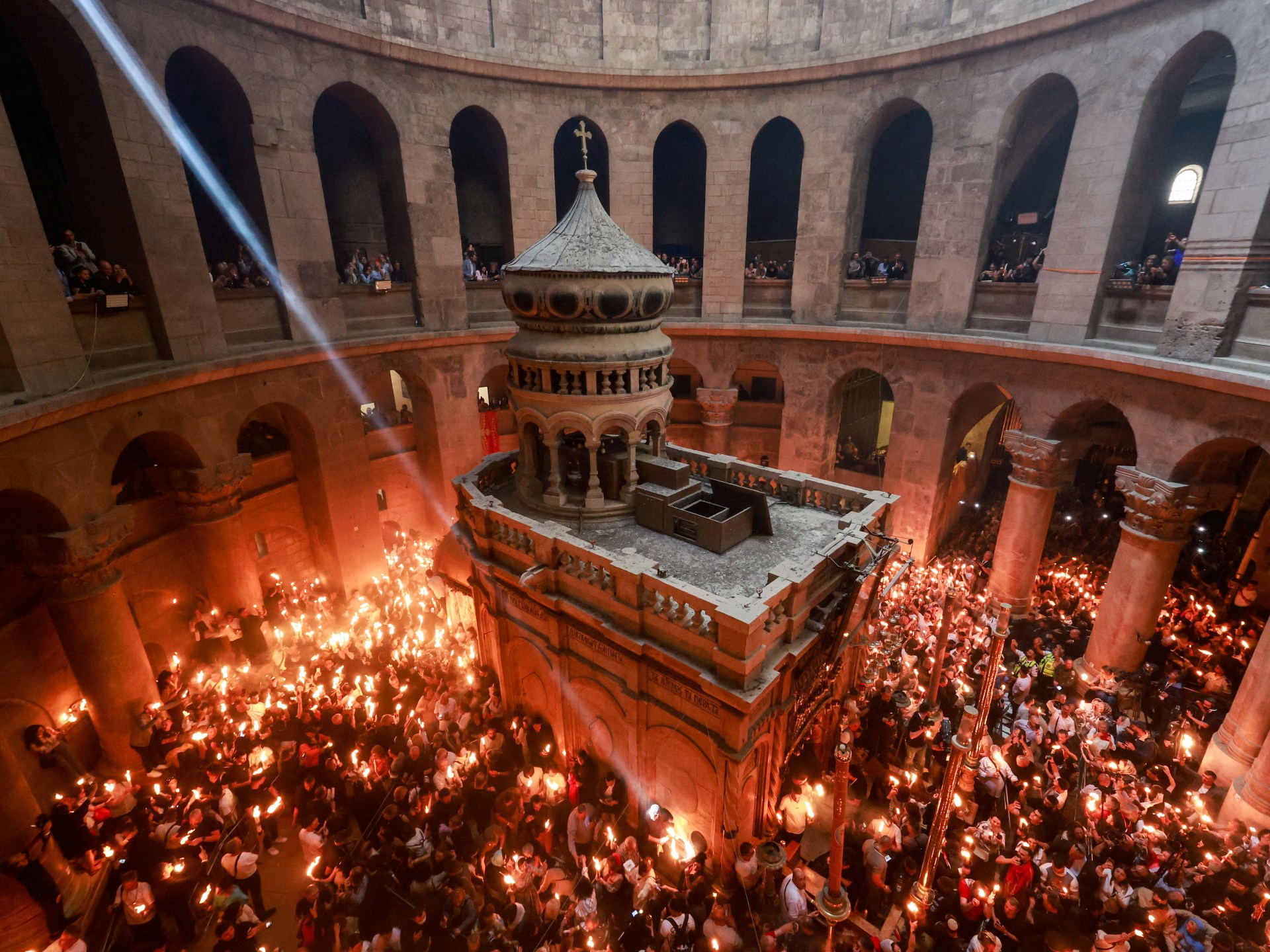
Thousands of Christians gathered in the cavernous Church of the Holy Sepulchre for a centuries-old Holy Fire ceremony.
Holding unlit candles, they packed into the sprawling 12th-century basilica built on the site where, according to tradition, Jesus was crucified and buried.
In near-total darkness, the Greek patriarch entered the Holy Edicule and emerged with two lit candles. The flame was passed from one candle to the next, the light overcoming the darkness in the rotunda. The flame was later transferred to Orthodox communities in other countries on special flights.
Eastern Orthodox Christians believe the light miraculously appears inside the Holy Edicule, built on the traditional site of Jesus’s tomb, while sceptics going back to the Middle Ages have dismissed it as a carnival trick for the masses.
Either way, the ceremony, which goes back at least 1,200 years, is a sight to behold. It has also ignited safety concerns.
In 1834, a frenzied stampede broke out in the darkened church, and the ruler of the Holy Land at the time barely escaped after his guards drew swords and hacked their way through the crowd, historian Simon Sebag Montefiore recounts in his history of Jerusalem. Some 400 pilgrims died in the melee, most from suffocation or trampling.
Israeli authorities have sought to limit participants in recent years, citing safety concerns. That has drawn protests from church leaders, who have accused them of upsetting the delicate, unwritten arrangements around Jerusalem’s holy sites known as the status quo.
On Saturday, there was a heavy military presence as thousands of worshippers passed through Israeli checkpoints to enter.
Some worshippers lamented that the turnout lacked numbers this year because of Israel’s 18-month war on Gaza. “The number of police is higher than the number of pilgrims,” said Adeeb Joude, key holder for the Holy Sepulchre.
Israel captured East Jerusalem, including the Old City with major sites sacred to Jews, Christians and Muslims, in the 1967 Middle East War, and annexed it in a move not recognised internationally. The Palestinians want East Jerusalem to be the capital of their future state.
The Old City has a long history of tensions between Israelis and Palestinians, among different religious groups that share its hilly confines and even within certain faiths. Perceived infringements on the status quo in the Church of the Holy Sepulchre have led to brawls between monks of different denominations.
Israel says it is committed to ensuring freedom of worship for Jews, Christians and Muslims, and has long presented itself as an island of tolerance in the Middle East.
In recent years, however, tensions have risen with the local Christian community, most of whom are Palestinian Christians, a population that has dwindled through decades of conflict as many have moved abroad.
Middle East
US attacks Yemen again after at least 80 people killed in Hodeidah | Israel-Palestine conflict News
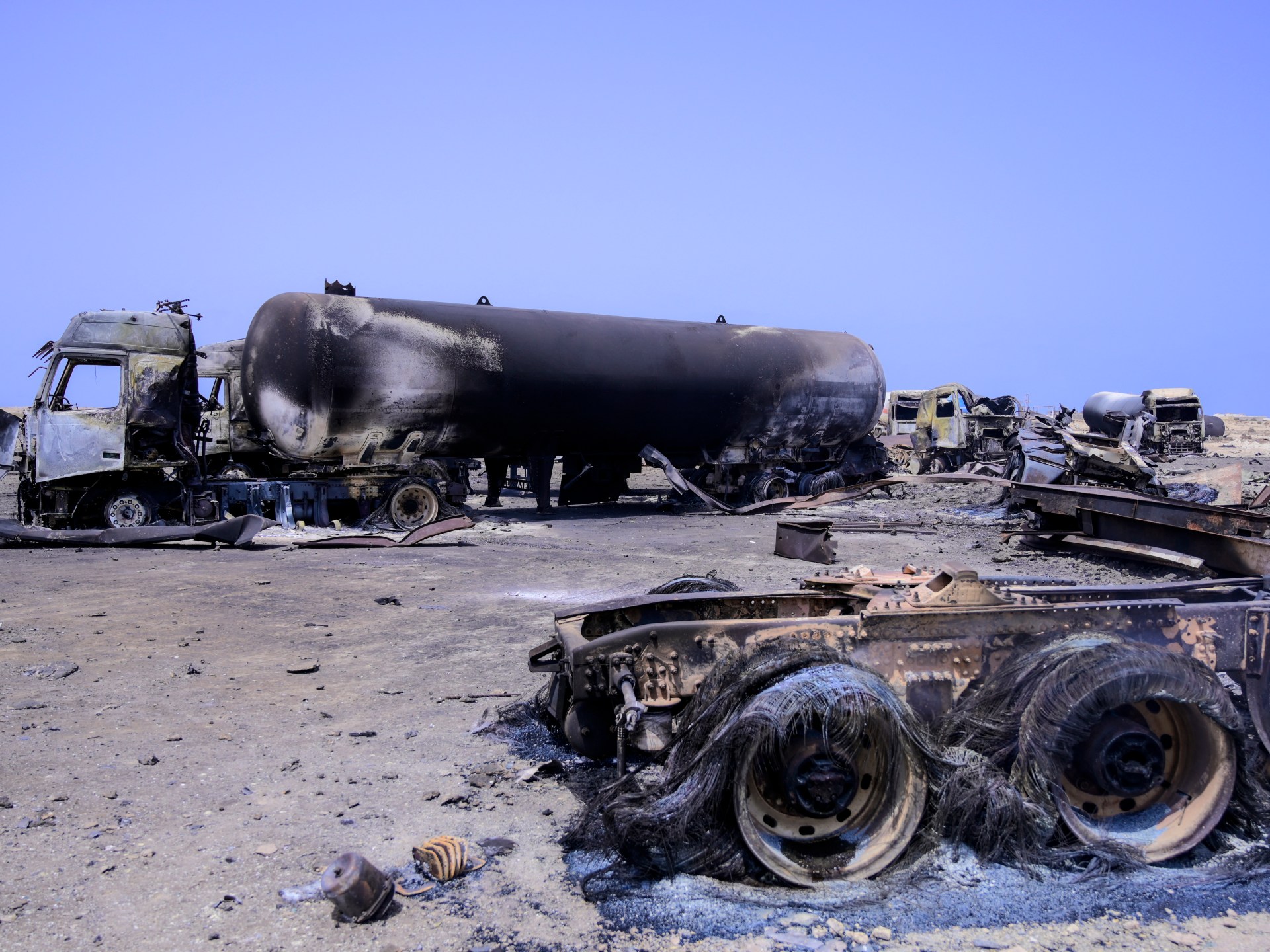
UN chief Antonio Guterres says he is ‘gravely concerned’ about US air strikes this week on Yemen.
The United States has carried out 13 air strikes on Hodeidah’s port and airport, the Houthi-affiliated TV channel Al Masirah says, two days after a US air strike targeted the Ras Isa port, also in Hodeidah, killing at least 80 people and wounding more than 150.
Al Masirah also reported Saturday that three people were killed and four injured due to a US attack on al-Thawra, Bani Matar, and al-Safiah districts in the capital Sanaa.
The Houthis have promised to carry out “more operations” despite the ongoing US attacks.
US President Donald Trump’s administration announced a major military offensive against the Houthis a few weeks ago. It said the air strikes are aimed at forcing the Houthis to stop threatening ships sailing on the Red Sea on a route crucial to international trade.
Since November 2023, the group has reportedly launched more than 100 attacks on vessels it says are linked to Israel in response to Israel’s war on Gaza and in solidarity with Palestinians.
On Friday, Houthi official Mohammed Nasser al-Atifi told Al Masirah that the “American enemy’s crimes” will not deter the Yemeni people from supporting Gaza, but “rather will strengthen their steadfastness and resilience”.
The Houthis, also known as Ansar Allah or “supporters of God”, are an armed group that controls most parts of Yemen, including Sanaa. The group emerged in the 1990s but rose to prominence in 2014 when it seized Sanaa and forced President Abd-Rabbu Mansour Hadi to flee the country.
United Nations Secretary-General Antonio Guterres “is gravely concerned about the airstrikes conducted by the United States over the course of 17 and 18 April in and around Yemen’s port of Ra’s Isa, which reportedly resulted in scores of civilian casualties, including five humanitarian workers injured,” Guterres spokesman Stephane Dujarric said in a statement on Saturday.
Guterres expressed fears of damage to the port and “possible oil leaks into the Red Sea”, Dujarric added.
The strikes on Ras Isa aimed to cut off supplies and funds for the Houthis, the US military said. It was the deadliest attack of Washington’s 15-month campaign against the Iran-aligned group.
About 70 percent of Yemen’s imports and 80 percent of its humanitarian assistance pass through the ports of Ras Isa, Hodeidah and as-Salif.
Ras Isa also is the terminus of Yemen’s main oil pipeline, which, along with its port, are “critical and irreplaceable infrastructure” in Yemen, according to the UN Development Programme.
-

 Education2 days ago
Education2 days agoHarvard’s battle with the Trump administration is creating a thorny financial situation
-

 Europe2 days ago
Europe2 days agoTrump’s ‘lone ranger’: How Steve Witkoff became the defacto point man on America’s foreign policy challenges
-
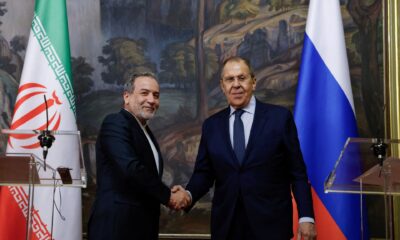
 Conflict Zones2 days ago
Conflict Zones2 days agoIran has ‘doubts’ about US intentions ahead of nuclear talks | Politics News
-

 Conflict Zones2 days ago
Conflict Zones2 days ago‘How do I live like this?’ asks Gaza boy who lost arms in Israeli attack | Gaza News
-

 Conflict Zones2 days ago
Conflict Zones2 days agoTrump says US may ‘pass’ on helping end war if Russia, Ukraine resist deal | Russia-Ukraine war News
-

 Middle East1 day ago
Middle East1 day agoTunisian court hands opposition figures lengthy jail terms | Human Rights News
-

 Europe2 days ago
Europe2 days agoHow the US threat to ‘move on’ from peacemaking efforts in Ukraine could play out
-
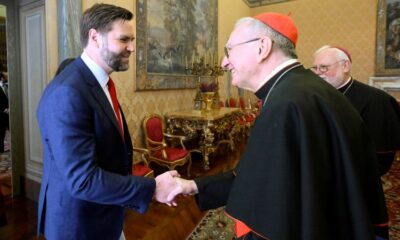
 Europe1 day ago
Europe1 day agoVance, Vatican officials engage in ‘exchange of opinions’ over migrants




